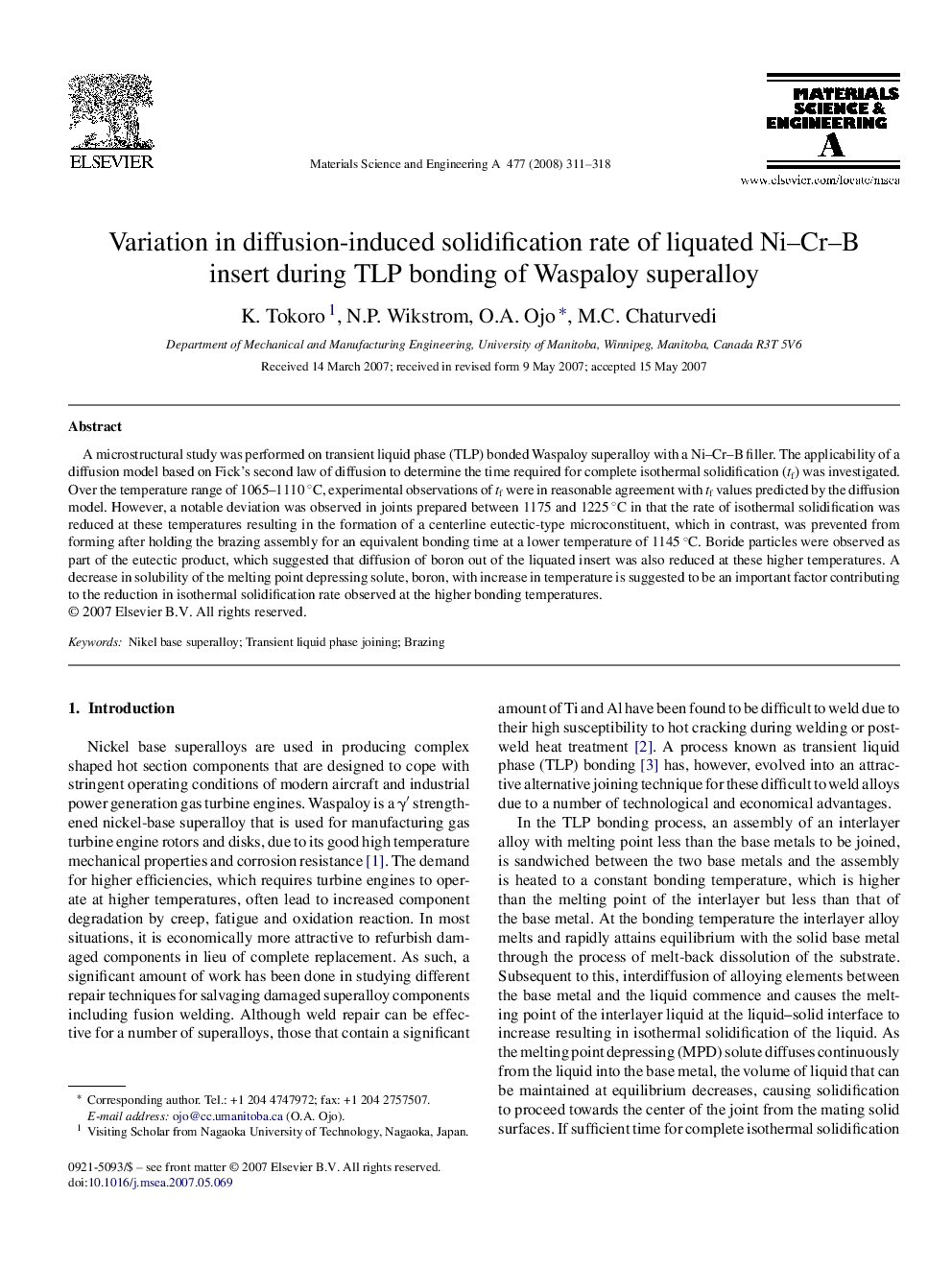| Article ID | Journal | Published Year | Pages | File Type |
|---|---|---|---|---|
| 1582908 | Materials Science and Engineering: A | 2008 | 8 Pages |
Abstract
A microstructural study was performed on transient liquid phase (TLP) bonded Waspaloy superalloy with a Ni-Cr-B filler. The applicability of a diffusion model based on Fick's second law of diffusion to determine the time required for complete isothermal solidification (tf) was investigated. Over the temperature range of 1065-1110 °C, experimental observations of tf were in reasonable agreement with tf values predicted by the diffusion model. However, a notable deviation was observed in joints prepared between 1175 and 1225 °C in that the rate of isothermal solidification was reduced at these temperatures resulting in the formation of a centerline eutectic-type microconstituent, which in contrast, was prevented from forming after holding the brazing assembly for an equivalent bonding time at a lower temperature of 1145 °C. Boride particles were observed as part of the eutectic product, which suggested that diffusion of boron out of the liquated insert was also reduced at these higher temperatures. A decrease in solubility of the melting point depressing solute, boron, with increase in temperature is suggested to be an important factor contributing to the reduction in isothermal solidification rate observed at the higher bonding temperatures.
Keywords
Related Topics
Physical Sciences and Engineering
Materials Science
Materials Science (General)
Authors
K. Tokoro, N.P. Wikstrom, O.A. Ojo, M.C. Chaturvedi,
